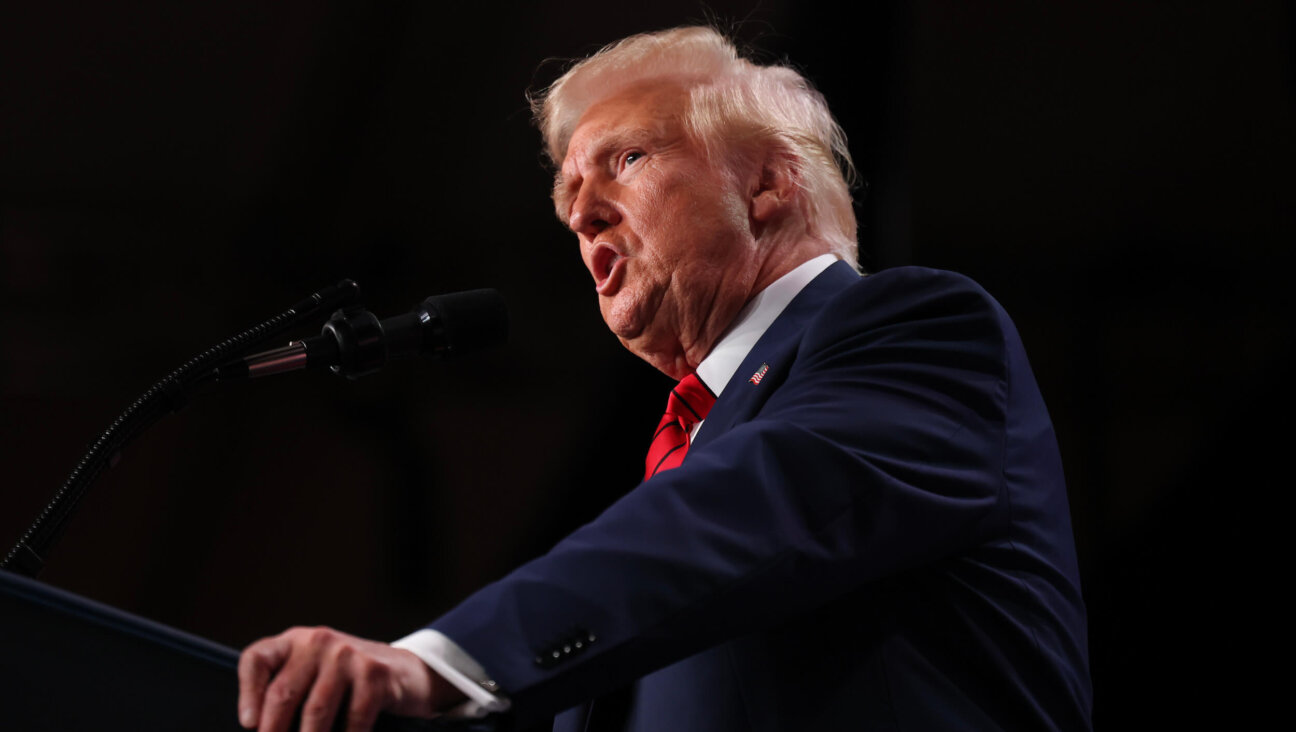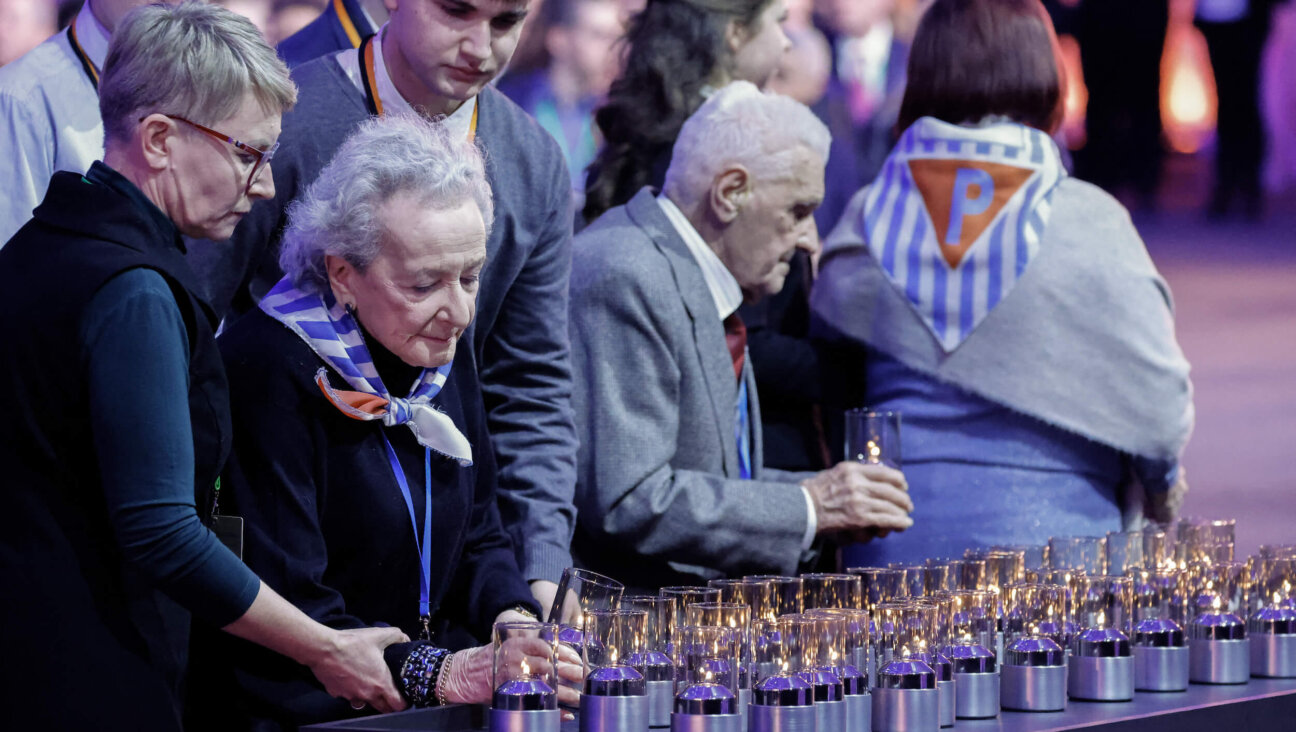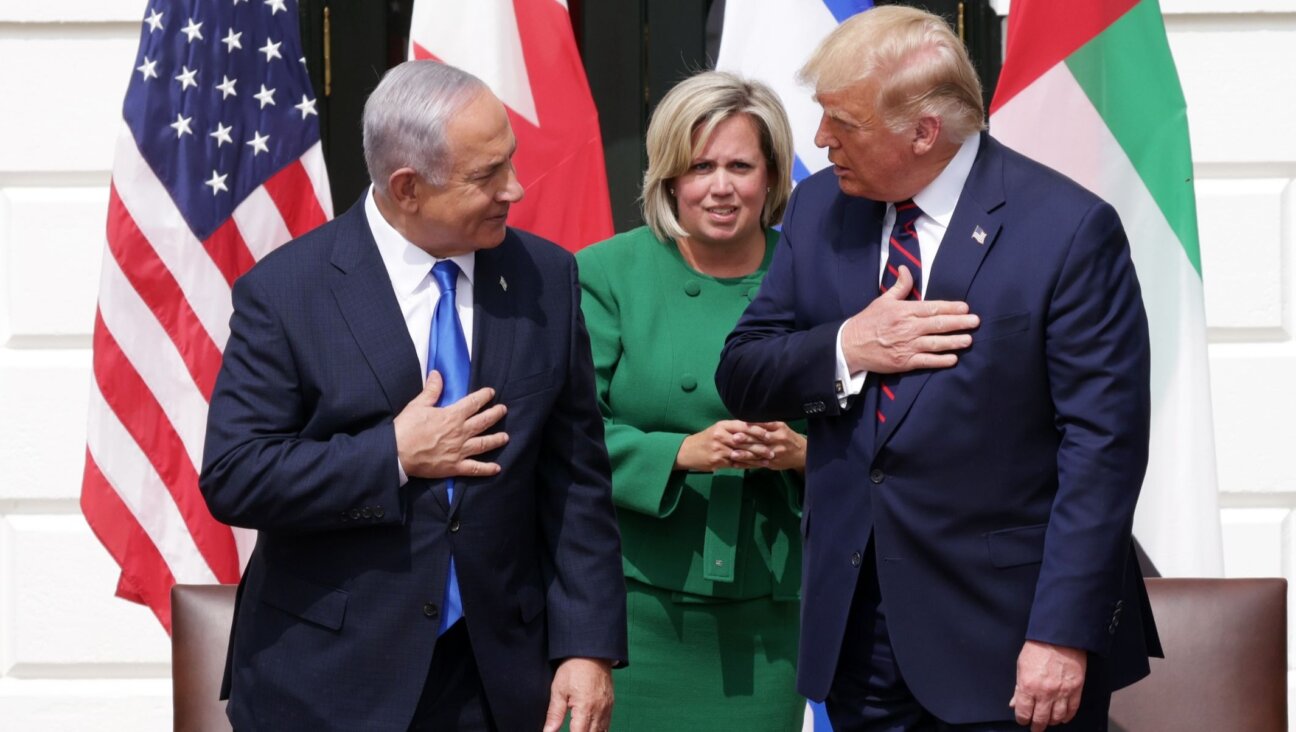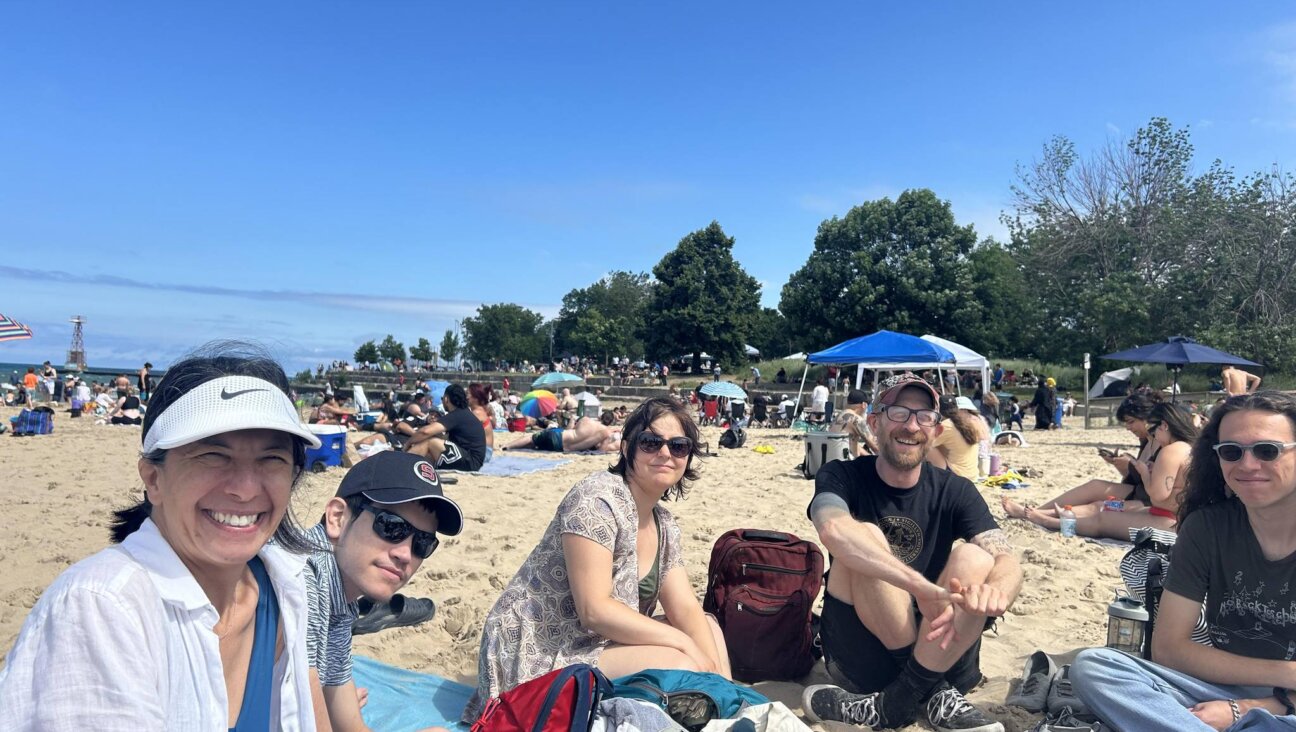A Bittersweet Holocaust Memorial in Berlin

Image by getty images
While President Obama attended meetings in Berlin prior to his grand address at the Brandenburg Gate, First Lady Michelle Obama and their children, Malia and Sasha, visited the Memorial to the Murdered Jews of Europe. Guided by the director of the site, Uwe Neumärker, the family spent half an hour among the 2,711 stone sarcophagi which range in height and rise and fall along the undulating ground across the five-acre site.
“They were impressed that we Germans have such a memorial in the centre of our city,” Neumärker later told the JTA. The First Lady in particular was said to have commented that the memorial “really has an aura.” But while the site has the White House seal of approval, since its opening in 2005 — in fact, even during the years preceding its construction — Peter Eisenman’s memorial has been controversial and divisive.
I have been to the memorial on several occasions at different times of day and night and at different times of year. With each visit, my impression of the site evolves and changes. Its scale – the memorial takes up an entire city block – can at times feel alienating and at others speaks to the scope and enormity of the catastrophe. Its logical, fashioned layout and the cool and unrelenting greyness of the stones can either feel distant and impersonal or like a statement about the cold, mechanised, and rationalised way in which the Holocaust was carried out, how it came to be faceless for those who were committing the crime.
In particular, I appreciate the way in which Memorial to the Murdered Jews has come to be the focal point for commemoration of the Jewish past in Berlin, a space for strangers to explore, wander, and wonder. When you walk down into the very centre of the memorial, sunken and enveloped by the looming columns, the sounds and sights of Berlin are eradicated. The Memorial to the Murdered Jews of Europe thus, at its best, creates the space for reflection and contemplation, or at the very least forces an emotional response through isolation and dislocation. At night, when the stelae hold back what little light there is, such thoughts and reactions are only heightened, deepened.
This is made possible by the memorial’s abstraction and ambiguity – nothing about it is guided or forced, each visitor granted the space to engage and have their own experience. But it is this indistinctness and the almost remote nature of the memorial that has beget criticism. Writing in The New Yorker, Richard Brody stated that there is a vagueness about the memorial which is he finds “disturbing”. Indeed, without the full title, “it would be impossible to know what the structure is meant to commemorate; there’s nothing about these concrete slabs that signifies any of the words of the title, except, perhaps, ‘memorial.’”
This disconnection Brody identifies is indeed inescapable. For a site which proclaims itself to be specifically dedicated to the memory of murdered Jews, there is nothing particularly Jewish about it at all. By comparison, across the street is the Memorial to the Homosexuals Persecuted under the National Socialist Regime, at which through a small window in a concrete cuboid, a movie depicting a kiss is visible. This scene is befitting as a symbol of defiance, “a lasting symbol against exclusion, intolerance and animosity towards gays and lesbians.” Whatever one thinks of the memorial and the film, it does at the very least fulfil its duty in this way.
At the Memorial to the Murdered Jews, its imprecision has led to the site being misused and mistreated. Companies as diverse as easyJet and Grindr have been found out for using the stones as a canvas for fashion spreads or provocative profile pictures. When the +972 contributor Ami Kaufman visited the memorial, he discovered a young female model clutching a bunch of red balloons, posing for a Valentine’s Day photo shoot. “Berlin’s a big town. I think Frau Wenk [the model] could have found a better place to promote herself,” he wrote.
On a day to day basis, The Forward’s Lilit Marcus recently described how when she was taken to the memorial, Berliners were sitting upon the slabs “smoking and eating their lunches”. And, from my experience, I cannot recall a visit to the memorial when there hasn’t been at least one group of teenagers – though sometimes people old enough to know better – running around the site as if the pathways and the towering stelae present fresh opportunities to play childish games.
Such criticisms notwithstanding, I believe that the memorial can be terribly powerful and affective, and above all it is indeed a testament to the willingness of the Berlin authorities to very visibly place the memory of murdered Jews at the centre of city life, as the First Lady remarked. But perhaps as a site of remembrance, the Memorial to the Murdered Jews of Europe can be said to be failing. It appears as if is only a memorial, a reflective pool of memories, for those who want it to be.
At the very least, however, the Memorial to the Murdered Jews of Europe is blessed with one of the finest Holocaust museums I have visited. Located beneath the acres of stones, the museum is comprised of only a few rooms, presenting details of the Shoah sparely in a way that is not purposefully designed to overwhelm as Yad Vashem or (I’m told) the Holocaust Memorial Museum in Washington D.C. can do.
After a brief chronological gallery, the museum begins in the Room of Dimensions, and much like the Memorial itself, the Museum here lays out the scale of the Holocaust, this time in numbers by nation. But then the Room of Families and the Room of Names draws the focus down to the personal in a way the Memorial simply cannot. In the latter of these rooms, names and years of birth and loss are projected onto the darkened walls, while biographies of the disappeared are read out, recounted, and therefore remembered.
A message from our Publisher & CEO Rachel Fishman Feddersen

I hope you appreciated this article. Before you go, I’d like to ask you to please support the Forward’s award-winning, nonprofit journalism so that we can be prepared for whatever news 2025 brings.
At a time when other newsrooms are closing or cutting back, the Forward has removed its paywall and invested additional resources to report on the ground from Israel and around the U.S. on the impact of the war, rising antisemitism and polarized discourse.
Readers like you make it all possible. Support our work by becoming a Forward Member and connect with our journalism and your community.
— Rachel Fishman Feddersen, Publisher and CEO






















